New Split Rail Fences from Historic Use of Locust Wood
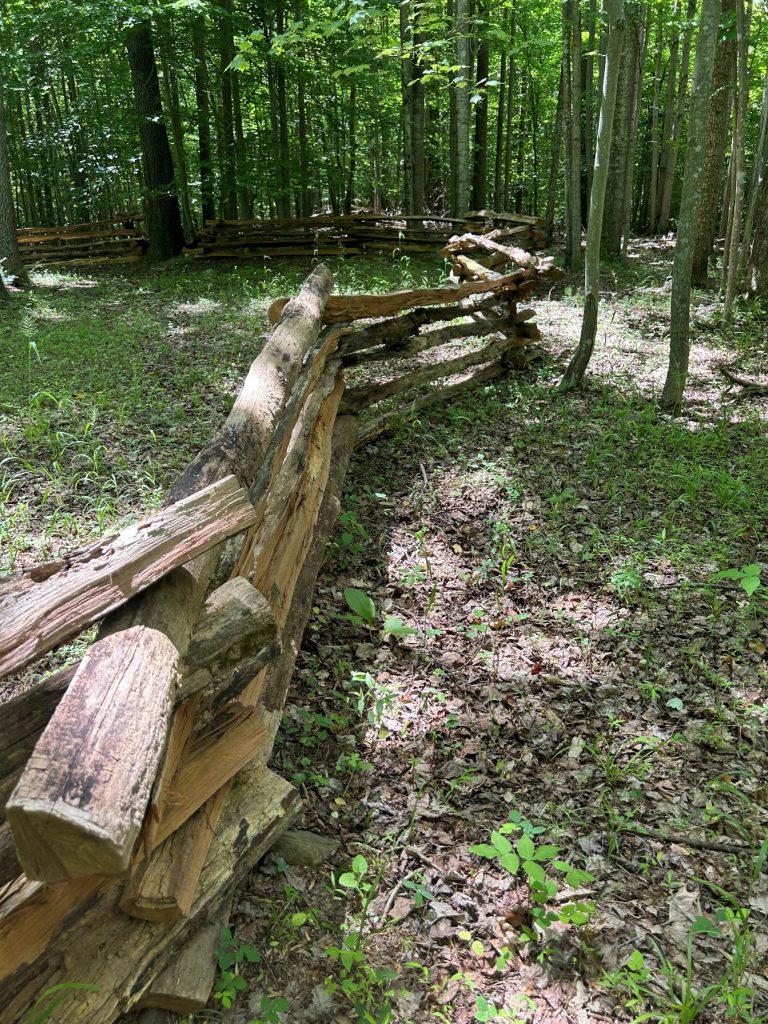
In conjunction with our current trail renovations and cultural history program, visitors might notice split rail fencing begin to surround our cultural history sites. Early inhabitants of the mountain would have used a similar style of fencing along with stone walls to mark their property, keep farm animals enclosed, and protect their farmland from unwanted intruders. Wood or stone fences were the only option until barbed wire became popular in the late 19th century. Remains from each of these styles of historic fencing can be seen today along our trails.

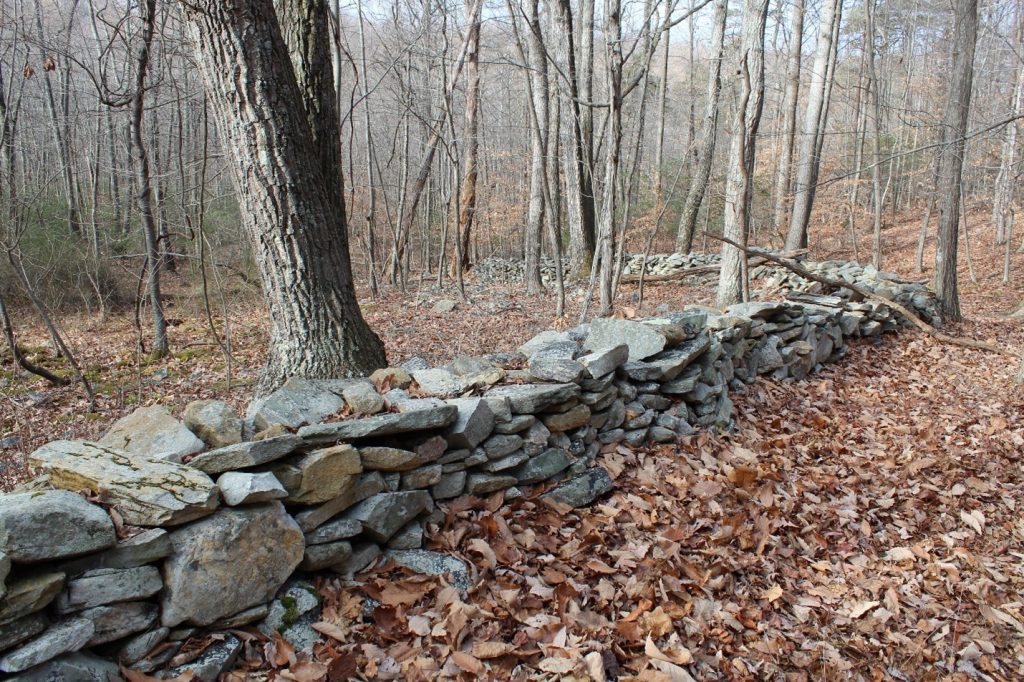
Although once common, the only known extant split rail fencing still left within the preserve is right next to the house site (formerly known as the Corum homesite) on the green loop. These rails are made from American Chestnut, which historically would have been a popular option due to its rot resistant qualities and abundance in early America. Unfortunately, American Chestnut was hit with a fungal blight, devastating their population, and is not an option for us today. However, with the effort being made by the American Chestnut Foundation and others, we hope that the American Chestnut will one day see a resurgence in suitable landscapes.
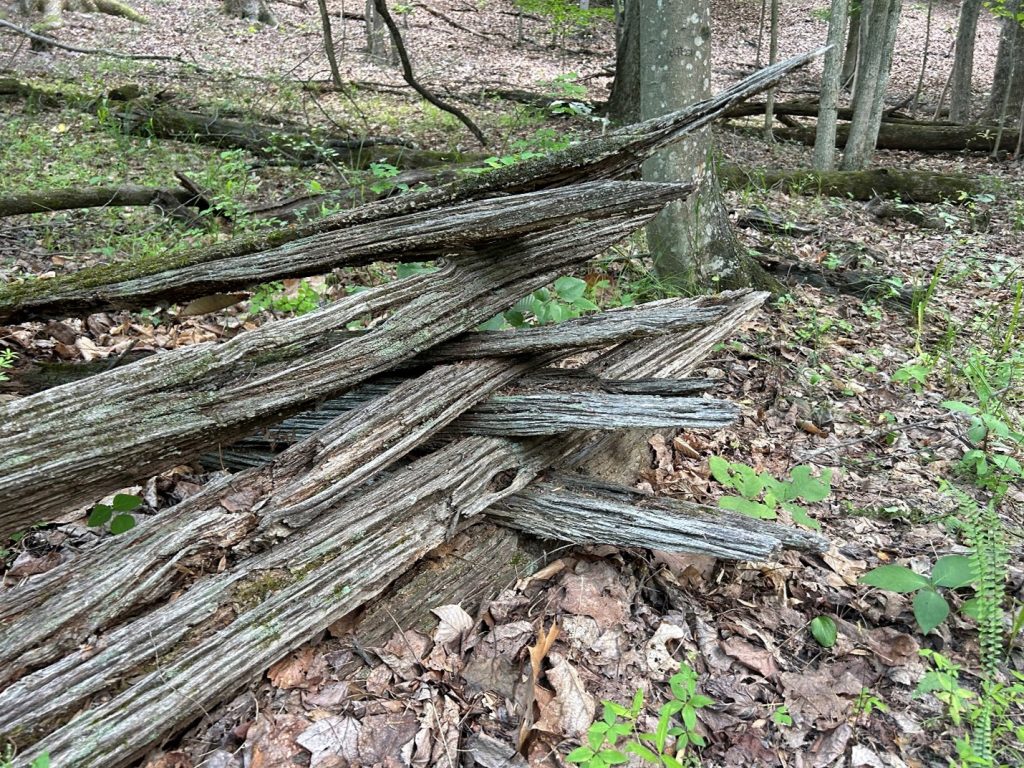
Below is a historic photo looking west towards the Beverly-Chapman Mill, roughly where our current trail head is today. It shows two styles of split rail fencing. The fence in the foreground is closer to the house and likely built around an important area such as a garden or livestock paddock, which requires a more secure fence. Here smaller logs are anchored in place at the ends with an upright log hammered into the ground, creating a secure enclosure. The fence in the background is the style most replicated today at historic battlefields like Manassas National Battlefield and is called a buck & rail fence. This style of fencing has an A frame where the horizontal rails overlap, this was to discourage animals from jumping over the fence by having that extra height.
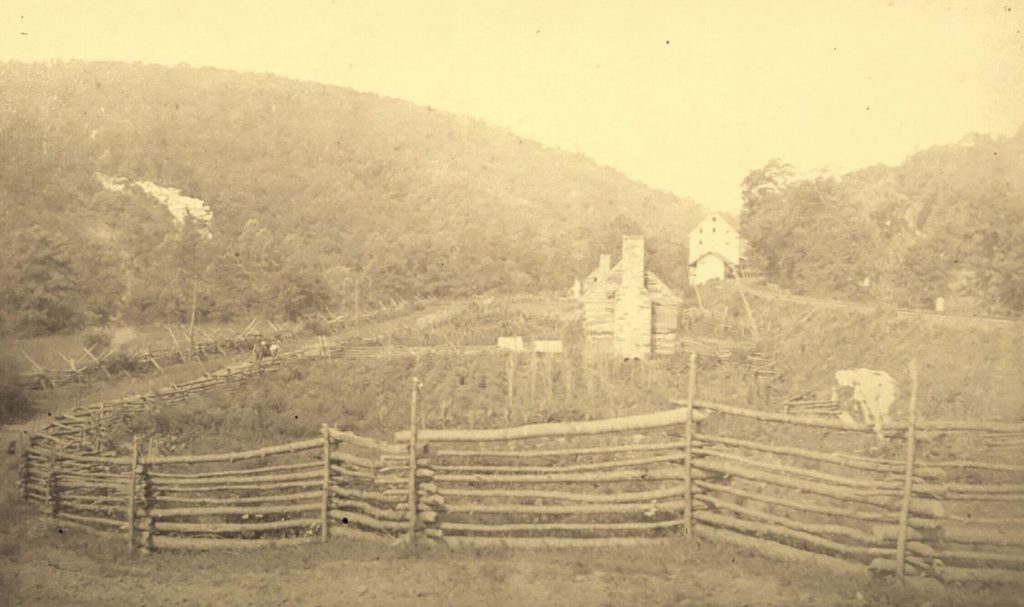
(Photo credits to the Save the Mill Foundation)
Our split rail fence was constructed in a worm-style out of Black Locust. Worm-style is the simplest form of split rail, where the rails are placed directly on top of the ground. This style is ideal for bordering our cultural history sites where we don’t want to disturb the soil. Black locust was chosen because it possesses an incredibly rot resistant wood and are abundant in certain parts of the preserve. As you can see in the below aerial photo from 1937, much of the eastern half of the preserve was farmland. Early successional trees like the black locust were the first to inhabit the farm fields after they were abandoned. Now, most of the locust trees have been shaded out by a second growth of poplar and oaks, which puts the locust in prime condition to be harvested.
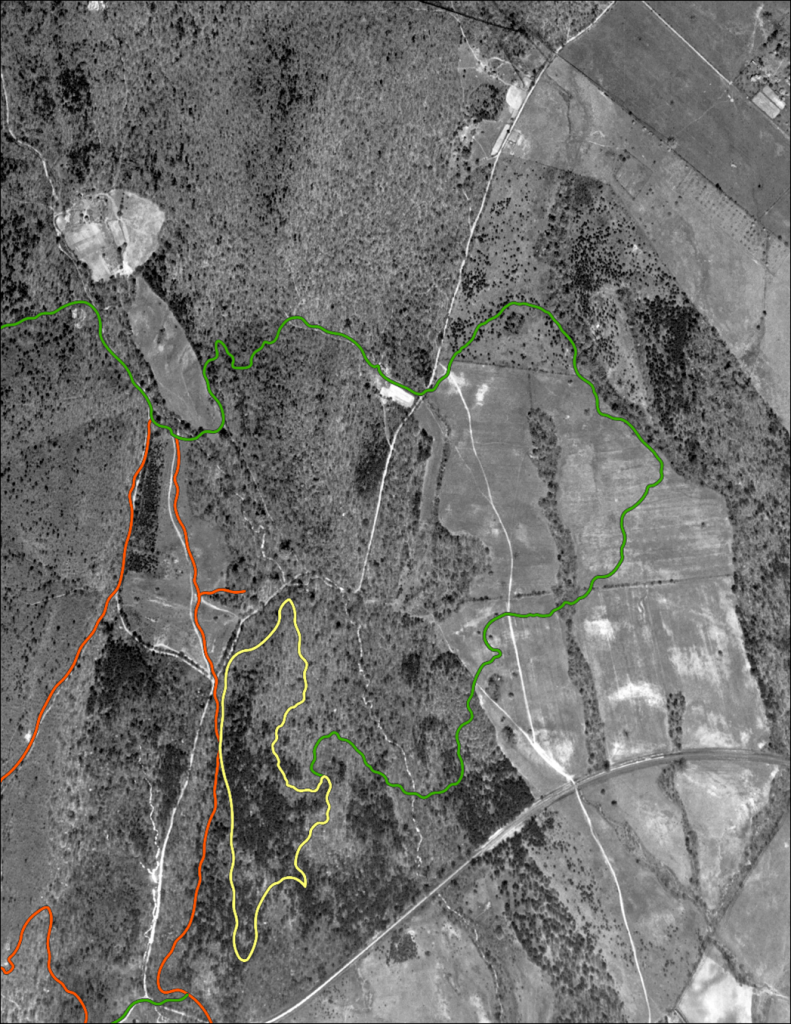
Many ideas were discussed before a split rail locust fence was chosen. Firstly, this material is free, which is an important consideration for a nonprofit venture. It is sourced from downed locust logs that were shaded out by larger trees, as a natural process of farms returning to forested land.
To buy hand-split rails, which are considered a boutique item, would be astronomically expensive for the amount of fencing we would like to have. Another consideration is that modern split rail fencing from a home improvement store comes from a tree that is cut down far away, driven to be treated with chemicals, and then driven again to a wholesaler, who delivers it to a store. Meanwhile, our downed black locust logs are already on site, will outlast their modern counterpart of pressure treated wood while still providing a similar ecosystem service that they were providing as habitat, just in a fence-like arrangement.
If you are interested in the details of the process for making your own split rail, stay tuned for more related content in the future!
And if you are inspired to help fund some of our many projects that help us study, steward, and provide public access here at VOF’s Preserve at Bull Run Mountains, please consider making a contribution to Virginia Outdoors Foundation today, HERE at BRMNAP. (Just please put “preserve” or “BRMNAP” in the comment line if you wish to contribute directly to VOF’s work.)
It’s fascinating to learn about the use of black locust wood for the new split rail fences, especially given its historical significance and durability. The effort to use locally sourced, naturally fallen wood also highlights a thoughtful approach to sustainability. I love how this project ties into the region’s history while making use of resources that are right on site. It’s a great example of blending cultural preservation with environmental stewardship! Looking forward to seeing more updates on the fencing and the ongoing trail renovations.
Comments are closed.